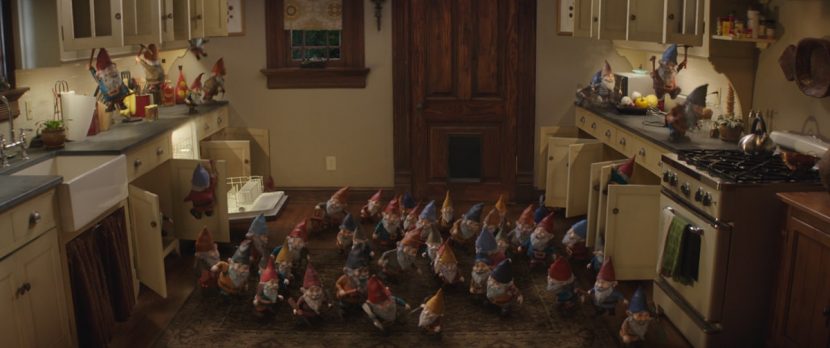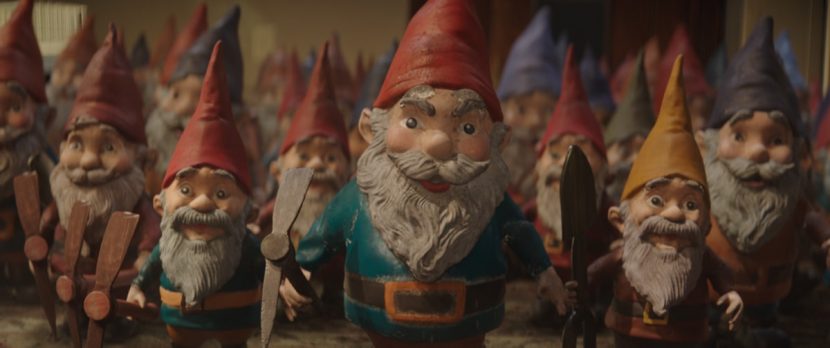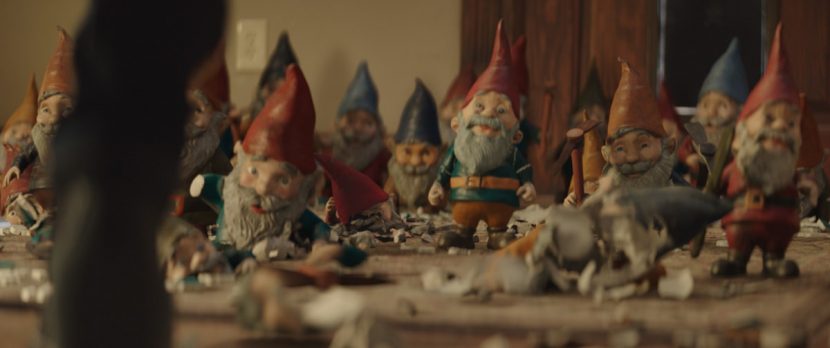Visual effects artists often need to come up with solutions for very unique problems. Director Rob Letterman’s Goosebumps, based on the hugely popular R.L. Stine novels, had plenty of unique challenges, from a gigantic praying mantis to a hairy werewolf and a myriad of ghastly creatures. Yet one cast of characters proved to be surprisingly just as tricky for visual effects studio MPC to bring to the screen – the evil garden gnomes. Perhaps you wouldn’t think that the pint-sized terracotta critters would be such a tough assignment, but to call the work easy would be a real, ahem, misgnomer. The garden ornaments attack our heroes, get smashed into little pieces, melt in an oven and then re-form – all the while with a stoic, and static, gnome expression. MPC Montreal visual effects supervisor Robert Winter, who worked with overall VFX supervisor Erik Nordby and MPC Vancouver supe Pete Dionne, explains how they the studio entered the great ungnome.
https://www.youtube.com/watch?v=51Zmvv75eFk
One of the first challenges for MPC was designing a character that would be made of rigid material that could still deliver a physical performance. “We found very little real world reference to help us,” notes Winter. “There were are a few videos of people in body casts that we found interesting, but the people in those examples lacked the level of mobility we needed for the gnomes.”
MPC produced some motion tests to explore a walk cycle for the gnomes, making sure to only include very limited joint rotations. “We began our test by rocking a gnome back and forth until we pushed it past its center of gravity,” says Winter. “We then had the gnome take a step to avoid falling on its face. We let that initial momentum carry the gnome into a walk cycle. We found that we could get away with adding fine articulate motion to the gnomes as long as we kept the overall movement very rigid. That became the underlying methodology for animation.”

Still, the evil gnomes remained mostly rigid, including the face which was essentially always static. “That was intentional,” states Winter. “Rob Letterman did not want the audience to see a change in the emotional state of the gnomes. It added to the creepiness of the gnomes. We used the moments when the gnomes interacted with each other to introduce some personality in their performance.”
MPC’s early work on the CG gnome models then informed practical gnome props that were created for principal photography. “The props department hand painted the gnomes and we used acquisition photos of their work to generate our textures for the CG gnome assets,” says Winter. “It was a very clever deliberate process of keeping continuity between the look of the practical gnomes and their digital doubles.”

Having practical gnomes on set enabled, of course, interaction between the characters and the actors. The kitchen sequence was so frenetic, though, that two kinds of practical gnomes were required, as Winter explains: “We took the approved MPC gnome models and manufactured breakable painted versions that the actors could throw and smash around the room as required, as well as green foam gnomes for moments of complex physical interaction. We also created several hero painted gnomes that were placed around the room to establish eye-lines for the actors, which doubled as perfect scene reference for our Lighting and Comp artists to match to.”
The sequence also includes a brief view of the gnomes behind shoved into an oven where they subsequently begin to melt. “The melting shots were a really nice example of all of our departments working together as a team,” outlines Winter. “Our animation team did a really great job with the performance of the gnomes that were thrown into the oven. Those performances were handed off to FX animation and one of our FX leads, Kevin Browne, handled the melting simulation. Additionally, Kevin generated animated textures that lighting used to give the appearance of paint layers melting off the gnomes. The finger print streaks on the oven glass were added later in comp.”

For scenes of the gnomes being thrown about and smashing into hundreds of pieces, MPC’s in-house solutions – the FEM tool Kali and the rigid body dynamic solver Papi – were used. In a surprise twist, however, the gnomes begin reforming, which required additional development on Kali. “Our FX team worked with our software department to add a new feature to Kali that allowed us to give the shattered pieces a target shape and position,” says Winter. “In the simulation, the intact gnome was used as a target shape and the goal of the shattered pieces was to find their original position in the intact gnome.”
Which just goes to show the evil critters really have gnomercy…
